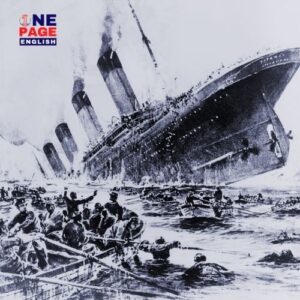Titanic
Titanic

RMS Titanic was a British passenger ship that sank in the North Atlantic Ocean on 15 April 1912,

RMS Titanic was a British passenger ship that sank in the North Atlantic Ocean on 15 April 1912,
© 2024 OnePage English.
All rights reserved.